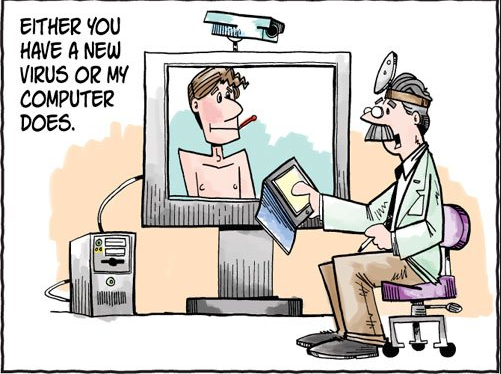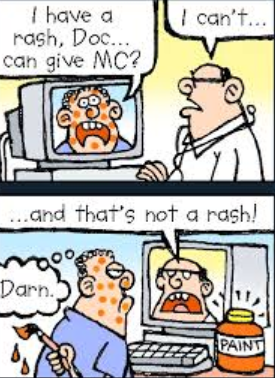No More Visits To The Doctor
by Chen Xinyi, Leo Qiyi Joel, Kok Wei En Isaac
13 Jul 2018
Have you ever wondered what telemedicine is? Telemedicine is basically the use of telecommunication and information technology to provide clinical health care from a distance. Its use of telecommunications networks allow one to access medical help through electronic devices all around the place without the need of visiting medical facilities, enabling greater reach into areas without direct medical access(eg. rural). I am sure you must be interested in the pros and cons of telemedicine now (If you are not, I am sure you wouldn’t read till here). Do not worry. Below are some great examples. Read on now!!!

Some benefits of telemedicine includes reducing travelling time as it will be suitable (compact, simple and enough) to be placed at your home, allowing physicians to regularly check up patient’s health (without adhering to the patient’s schedule and availability to go to the clinic/hospital) in order to provide patients better access to healthcare services. According to a recent Cisco global survey, 74% of patients prefer easy access to healthcare services over in-person interactions with providers. This would mean there is a higher interest in telemedicine services, allowing possible integration into the current medical system more favourable.
It also includes lowering healthcare costs, allowing more frequent health checks to be accommodated into the patient’s income and increasing the chances of lower income groups accessing medical services, placing a lower strain on their budget than conventional means. This also increases the attractiveness of seeking medical attention on a regular basis, which in turn would make the detection of some illnesses sooner in the customer population of Singapore.

Other than the benefits, there are also disadvantages of the telemedicine. One includes being able to make use of this system to fake MCs. The current technology makes it more difficult to fully certify whether the patient is lying due to the lack of a medical authority nearby to certify the patient’s condition. One way to improve this problem can be done through the telemedicine’s close analysis.A way to improve the system would be link a workerable lie detector with the medical services provided. As contemporary phones gain the ability to detect heart rate via sensors embedded in the phone, the telemedicine software can link this ability to its operations to allow the detection of heart rate during the consultation between the patient and the doctor. As a lie can only be spurned to a certain extent, if the heart rate of the patient spiked at the moment the doctor gives the suitable proceedings after the diagnostics, the doctor will be alerted as soon as possible and further actions will follow according to the individual doctor.. With the approval of the doctor, a MC will be produced for the patient.

Another disadvantage will be the cost of a single telemedicine machine.Today, a typical interactive equipment costs about $51500 (fixed) and $1042 per month. Many companies will not be able to afford that, which may slow down the process of integration of telemedicine into the industry and discourage smaller companies from adopting the technology due to cost issues .
In conclusion, telemedicine can be both beneficial and not. If improvements are made and over the years, they may even replace our doctors!! Is it encourageable for it to happen? What will happen for our doctors who studied so hard? It is up to you to imagine it for yourselves. Until next time, keep anticipating!